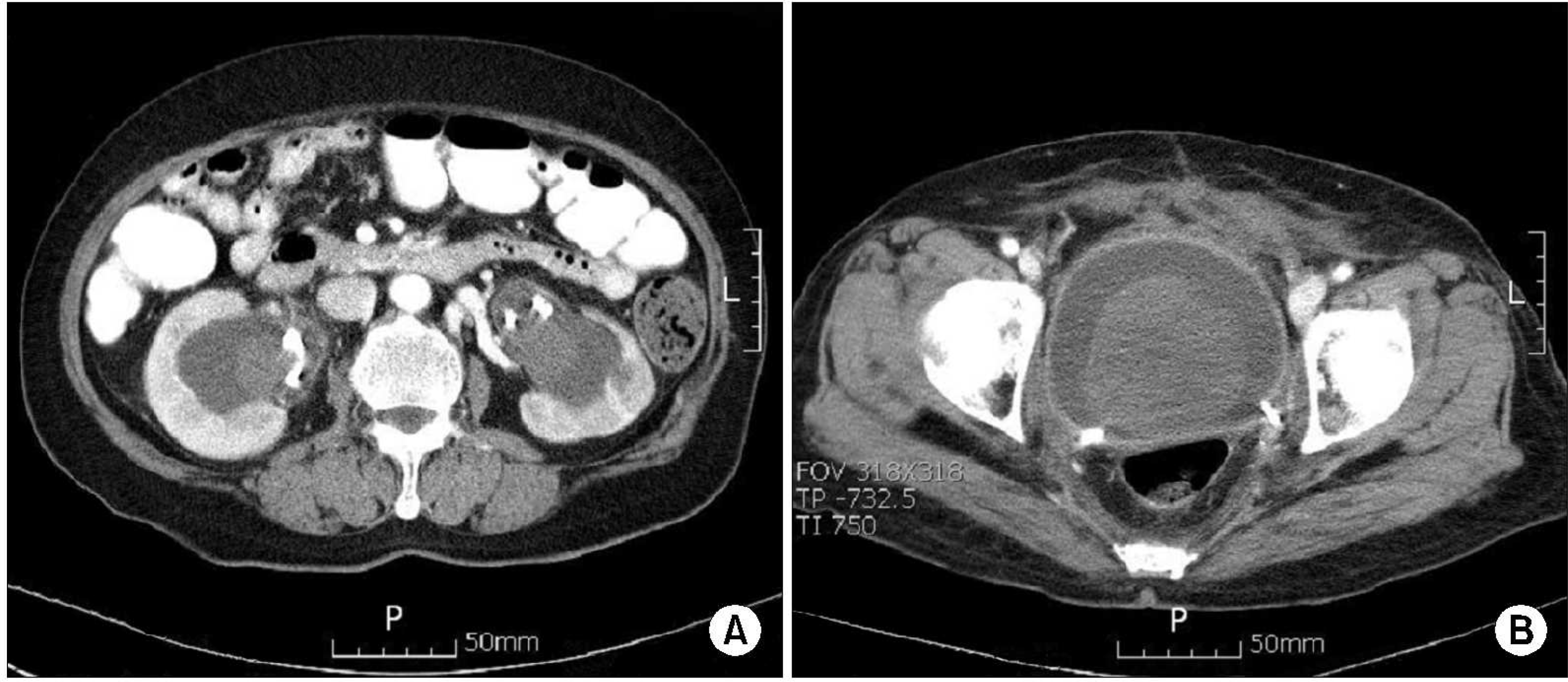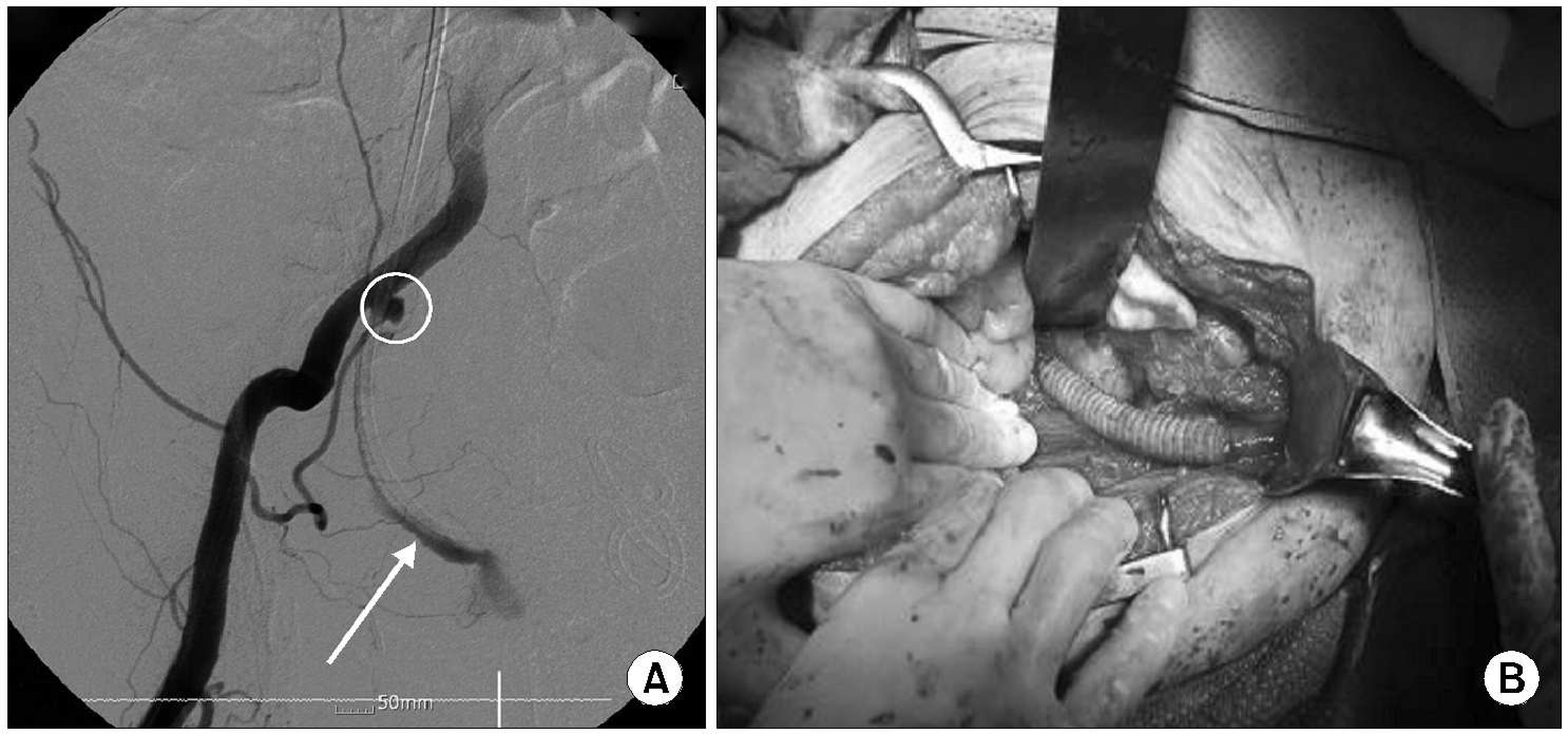Abstract
Arterio-ureteral fistulas are uncommon but potentially cause a life-threatening hemorrhage that manifest as gross hematuria. Approximately 90 cases of arterio-ureteral fistulas have been reported in the English-language literature. To our knowledge, there have been no report about this issue in Korea. We experienced 1 patient with arterio-ureteral fistula after pelvic operation and radiation therapy followed by ureteral stent. Arterio- ureteral fistula was diagnosed by selective arteriography and treated by surgical management successfully without complications. IpoHBJVhil
Go to : 
REFERENCES
1.Bergqvist D., Parsson H., Sherif A. Arterio-ureteral fistula: a systematic review. Eur J Vase Endovasc Surg. 2001. 22:191–6.
2.Feuer DS., Ciocca RG., Nackman GB., Siegel RL., Graham AM. Endovascular management of ureteroarterial fistula. J Vase Surg. 1999. 30:1146–9.

3.Vandersteen DR., Saxon RR., Fuchs E., Keller FS., Taylor LM Jr., Barry JM. Diagnosis and management of ureteroiliac artery fistula: value of provocative arteriography followed by common iliac artery embolization and extraanatomic arterial bypass grafting. J Urol. 1997. 158:754–8.

4.Batter SJ., McGovern FJ., Cambria RP. Ureteroarterial fistula: case report and review of the literature. Urology. 1996. 48:481–9.

5.Quillin SP., Darcy MD., Picus D. Angiographic evaluation and therapy of ureteroarterial fistulas. AJR Am J Roentgenol. 1994. 162:873–8.

6.Mado伴DC ., Gupta S., Toombs BD., Skolkin MD., Chamsan-gavej C., Morello FA Jr, et al. Arterioureteral fistulas: a clinical, diagnostic, and therapeutic dilemma. AJR Am J Roentgenol. 2004. 182:1241–50.
Go to : 
 | Fig. 1.(A) Bilateral hydronephrosis with hematoma, bilateral ureteral stent insertion state. (B) Round huge hematoma in the bladder. |
 | Fig. 2.(A) Bilateral renal angiogram shows no definite abnormal lesion. Ureteral stents are well positioned bilaterally and contrast of previously taken computed tomography (CT) is still remained in descending colon. (B), (C) Abdominal aortogram and selective iliac arteriogram shows no definite bleeding focus or vessel malformations. |




 PDF
PDF ePub
ePub Citation
Citation Print
Print



 XML Download
XML Download